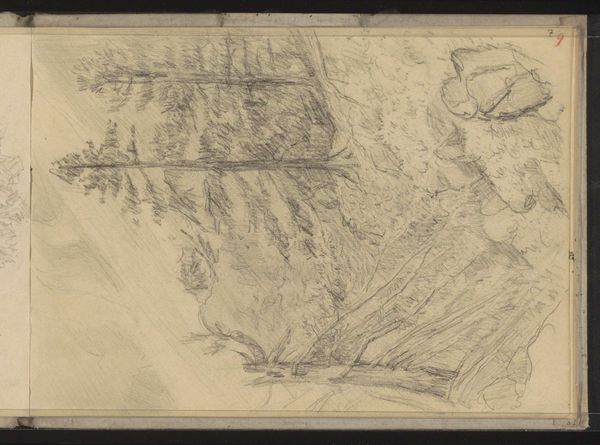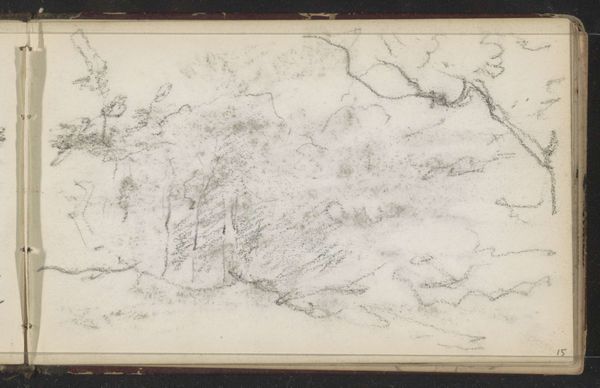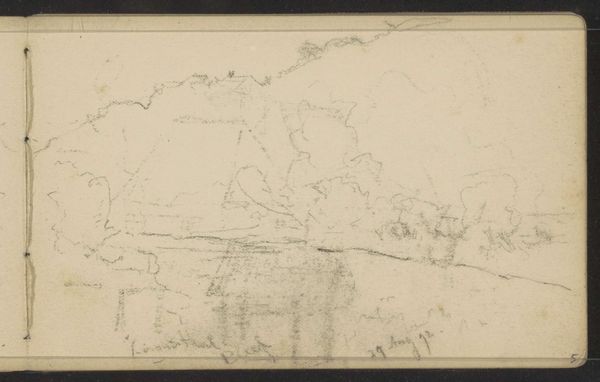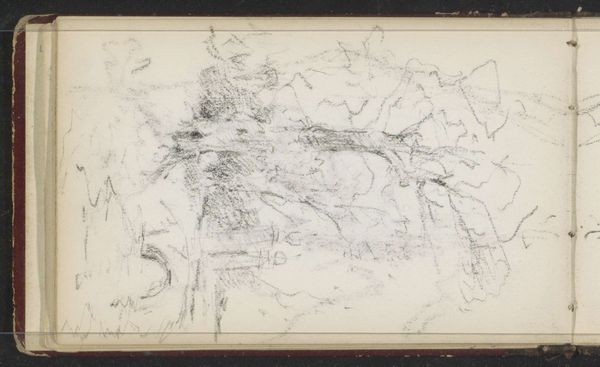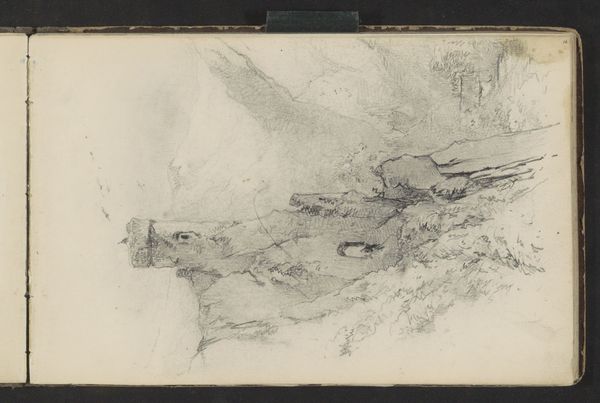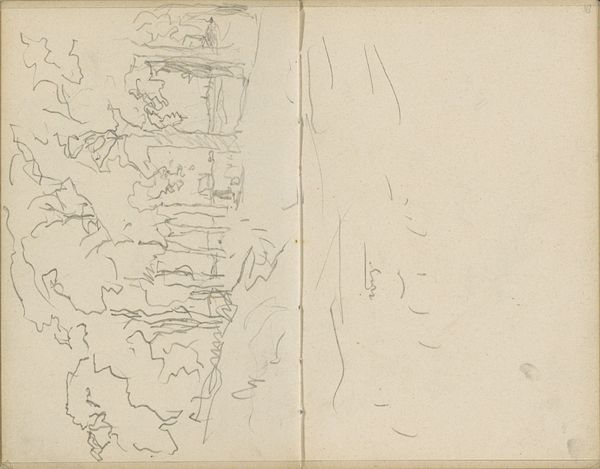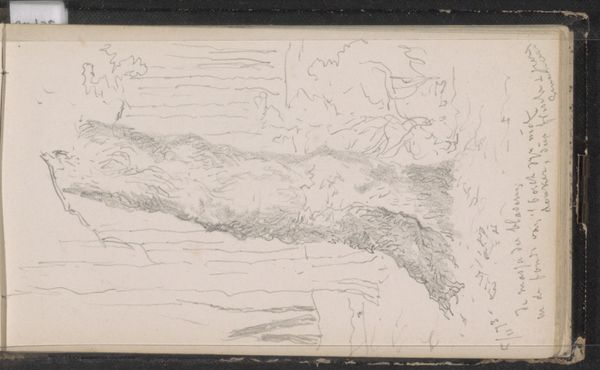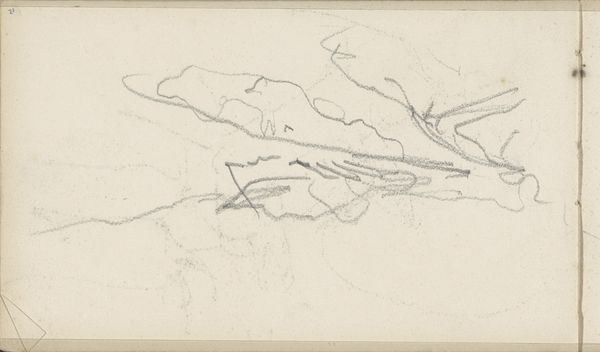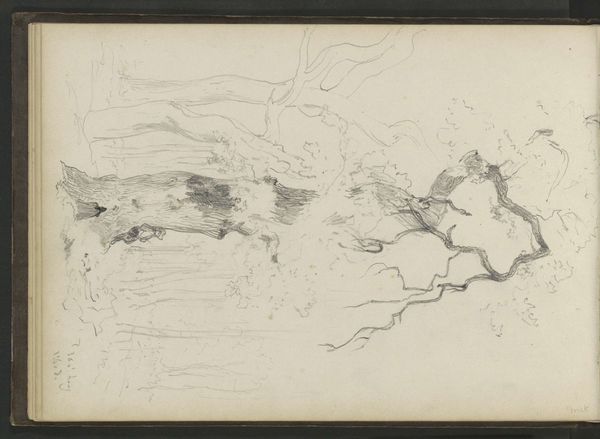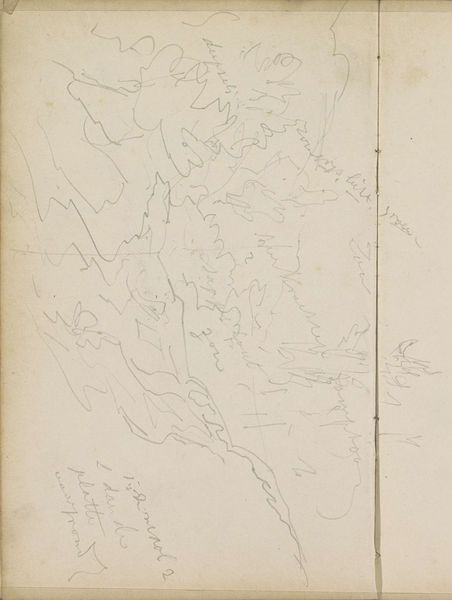
Copyright: Rijks Museum: Open Domain
Editor: We're looking at "Moss-Covered Beech" by Johannes Tavenraat, a pencil drawing from 1873 housed at the Rijksmuseum. It's a fairly small sketch, almost like a field study. What do you see here? Curator: What strikes me immediately is the immediacy of the work, and the artist’s hand present through the medium. You have graphite on paper, simple materials, cheaply available. It’s about making art accessible both to the creator and potentially to those who would learn from the piece later. Editor: That's a great point! It does feel very accessible, almost like we are invited to learn from Tavenraat's study of nature. Curator: Indeed! Consider the labor involved; the artist selecting, transporting, and then employing these materials, making decisions about pressure, line weight. Every mark speaks to a conscious choice of how to represent this tree. This challenges the traditional hierarchy in art valuing oil on canvas. Editor: So, even through a simple pencil sketch, we are asked to think about the means of production, the materials and even the artist’s intentions. How can this be helpful to us as consumers of art? Curator: I would suggest it moves the dialogue away from idealised beauty towards an understanding of how art is intrinsically tied to its making. We could even draw a line to how, now, we find value in upcycled or reused materials as modes of expression, right? Editor: Absolutely! I now understand that what seems like just a humble sketch encourages a dialogue between nature and art. Curator: Exactly, seeing art beyond just the visual result, to its components, creates avenues for wider appreciation and dialogue.
Comments
No comments
Be the first to comment and join the conversation on the ultimate creative platform.
